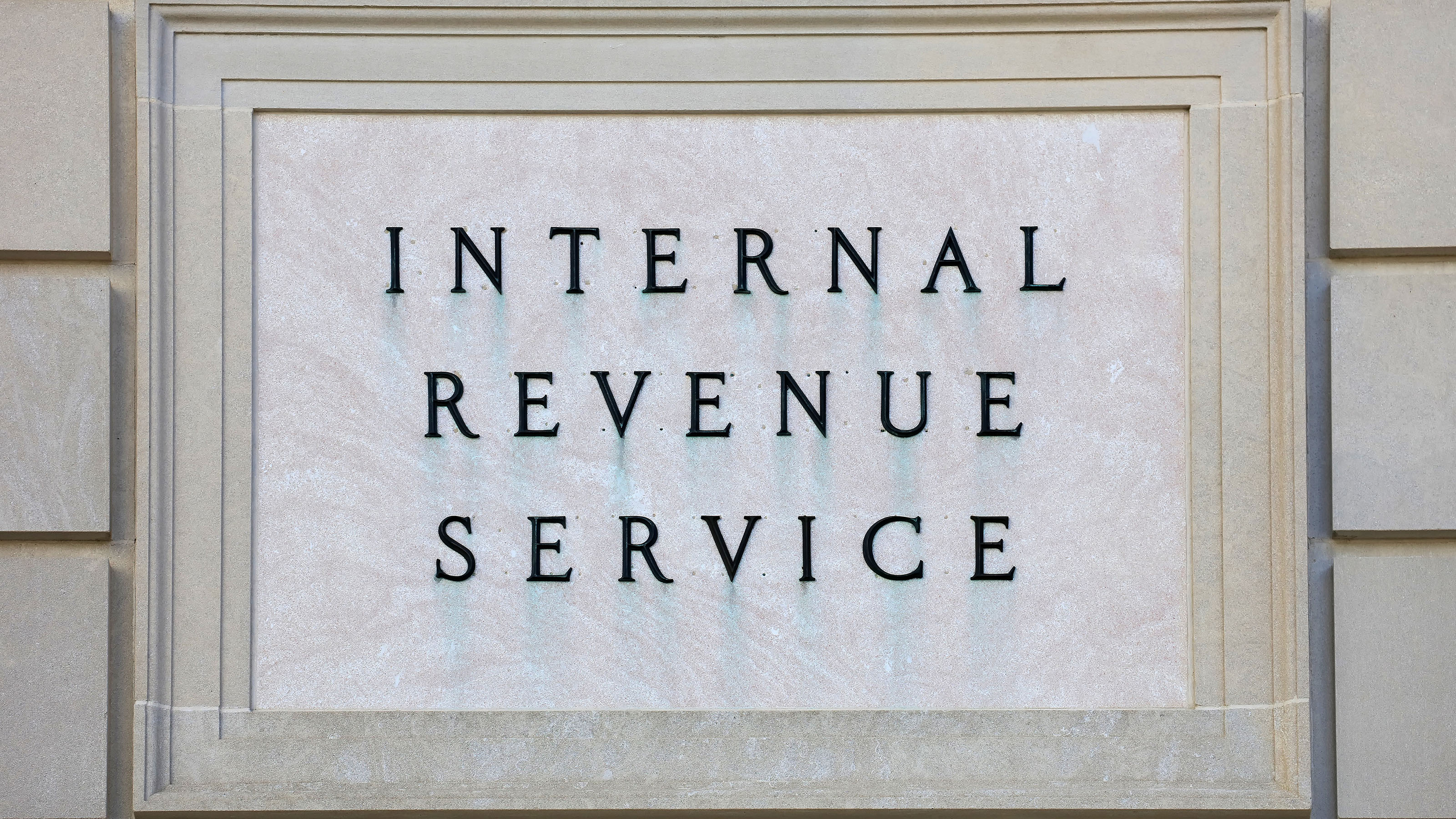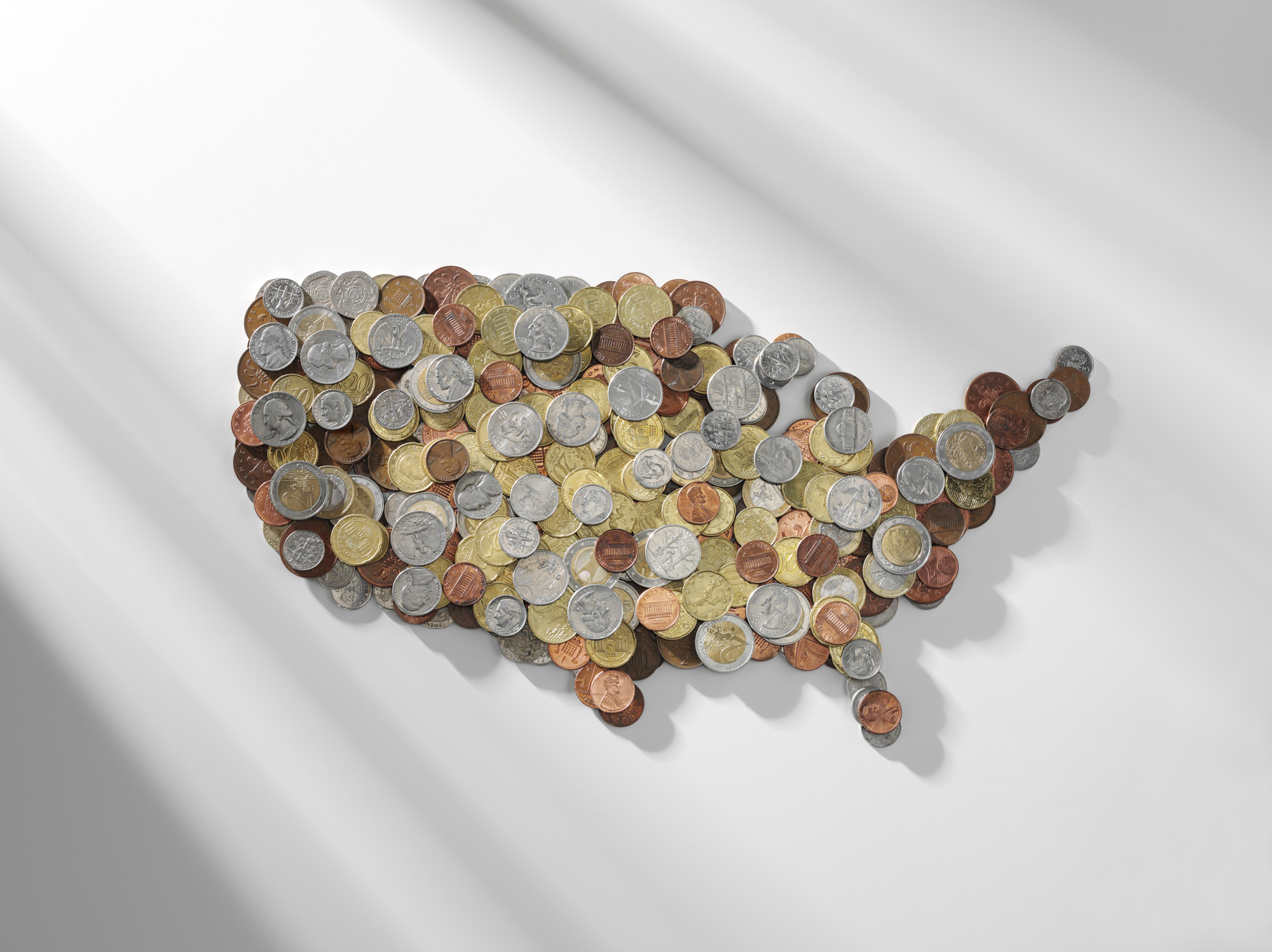Stimulus Checks 2025: IRS Payments, State Tax Rebates and What's Next
State 'stimulus checks,' tax rebates, and other payments are on their way to eligible residents in some states. Is your state one of them?


Stimulus checks from the federal government are essentially a thing of the past (those ended a couple of years ago). However, you may have heard recently that the IRS is sending unclaimed "stimulus payments" to one million taxpayers.
And, several states have stepped in to provide financial relief to their residents through tax rebates and inflation relief payments.
In the past couple of years, many states distributed one-time payments to qualifying residents, and some continue to offer rebates and "stimulus" payments.
From just $107.88 $24.99 for Kiplinger Personal Finance
Become a smarter, better informed investor. Subscribe from just $107.88 $24.99, plus get up to 4 Special Issues

Sign up for Kiplinger’s Free Newsletters
Profit and prosper with the best of expert advice on investing, taxes, retirement, personal finance and more - straight to your e-mail.
Profit and prosper with the best of expert advice - straight to your e-mail.
Here's more of what you need to know.
Related: Tax Refund Alert: House GOP Predicts 'Average' $1,000 Payouts in 2026
IRS Payments
IRS stimulus checks 2025?

- IRS is sending $1,400 payments for unclaimed 2021 Recovery Rebate Credit.
- Approximately 1 million taxpayers received these payments automatically.
- Eligible taxpayers had to file their 2021 tax return by April 15, 2025, to claim.
The IRS is wrapping up its distribution of $1,400 stimulus payments for unclaimed 2021 credits by automatically issuing up to $1,400 per taxpayer to approximately 1 million people.
Those individuals missed claiming the Recovery Rebate Credit on their 2021 tax returns.
- These payments, totaling $2.4 billion, target individuals who left the credit field blank or entered $0 despite being eligible for pandemic-era stimulus funds.
- The IRS identified these cases through internal reviews and began sending payments in late 2024, with direct deposits or checks based on 2023 filing information.
- Those who haven’t filed a 2021 return must do so by April 15, 2025, to claim their payment, even if they had little or no income that year.
Eligibility hinges on 2021 qualifications under the American Rescue Plan, which provided $1,400 per person (plus $1,400 per dependent) to individuals earning under $75,000 (single) or $150,000 (joint filers).
Taxpayers must have a valid Social Security number and not be claimed as dependents. The IRS is sending letters to notify recipients.
This marks the end of pandemic-era direct relief, with no new federal stimulus checks on the horizon.
For more information on those payments, see Kiplinger's report IRS Sending Up to $1,400 to One Million People: Are You Eligible?
Tariffs
Trump $2,000 stimulus check coming soon?
- Proposed $600 tariff rebate checks under the American Worker Rebate Act are not law.
- President Trump has proposed a $2,000 "tariff dividend" for 2026.
- Economists widely criticize the $2,000 dividend proposal as impractical.
An idea floated earlier this year on Capitol Hill was that millions of U.S. workers could receive new “stimulus checks” (tax rebates), funded through revenue collected from President Donald Trump’s tariffs.
That is the promise behind the American Worker Rebate Act, introduced in 2025 by Sen. Josh Hawley (R-Mo.) and seemingly backed by Trump.
But it's important to note that this proposal to send $600 checks is just that: a proposal. To become law, it would have to be approved by Congress and the President. For more information, see: Tariff Stimulus Checks Coming?
Also, more recently, President Trump proposed a $2,000 “tariff dividend” to be funded by new import tariffs, sparking heated debate.
On Truth Social, Trump declared, “People that are against tariffs are fools! … We are taking in trillions of dollars and will soon begin paying down our enormous debt… a dividend of at least $2,000 a person (not including high income people!) Will be paid to everyone.”
The administration provided little detail, and Treasury Secretary Scott Bessent later suggested to a reporter that the payout might come “in lots of forms, in lots of ways,” including tax cuts.
Economists widely criticize the idea as impractical, arguing that tariff revenues could not cover such costs and warning that the plan would likely increase prices for everyday Americans, thereby undermining any potential benefits.
For more information see: Are New Trump $2,000 Payments Coming in 2026?
DOGE
What about DOGE checks?
- The "DOGE stimulus check" was a political proposal for a potential $5,000 payment.
- Checks were proposed to be funded by "savings" from the Department of Government Efficiency.
- The proposal is a political concept, not likely to become a relief program.
The so-called “DOGE stimulus check" was a proposed government payment to taxpayers to distribute "savings" from the Trump administration's Department of Government Efficiency (DOGE). formerly headed by Elon Musk). It was initially touted as a potential $5,000 payment to eligible taxpayers.
The proposal suggested using 20% of DOGE's savings for these checks, but actual reductions have been far below the $2 trillion needed to fund such payments. As of March 2025, DOGE claimed about $130 billion in what it described as savings, translating to roughly $807 per taxpayer if ever distributed.
However, economists warn that with a massive deficit, the Treasury would need to borrow to distribute any “savings.” Also, Congress must approve any such proposal, which is uncertain due to concerns about inflation and national debt.
The funding reality is that any purported current savings are insufficient to support the proposed $5,000 checks, making this initiative highly unlikely.
So, for now, the DOGE stimulus check remains a political concept rather than a confirmed relief program.
State Tax Rebates
Special state payments in 2025

Getting back to this year's special state payments, the eligibility criteria, payment amounts, and delivery timelines differ from state to state.
Here's a breakdown of some states issuing rebate payments and “stimulus checks.”
California
- The Middle Class Tax Refunds (MCTR) program has concluded.
- The Sacramento Family First program is a separate pilot initiative offering $725 monthly payments to low-income families.
If you're in California, you might be familiar with the Sacramento Family First program.
This initiative provides $725 monthly payments to 200 low-income families until November 2025. It's a small pilot that could shape future universal basic income models.
On the other hand, California's Middle Class Tax Refunds (MCTR), which offered payments ranging from $200 to $1,050, has concluded. The California Franchise Tax Board (FTB) said the program benefited nearly 32 million California taxpayers and their dependents.
You generally should have received your California MCTR payment from October of last year to mid-January of 2023 (generally via direct deposit or MCTR debit card). The majority of the California payments should have been received by eligible residents by mid-February last year.
However, despite distributing more than 9.5 million debit cards to eligible Californians, millions of dollars in benefits remain unspent. As a result, the California FTB has urged residents to activate their MCTR debit cards.
For more information see Many California Inflation Relief Debit Cards Haven't Been Activated.
Colorado TABOR Refunds
- Colorado TABOR refunds are currently worth $177 to $1,130 per taxpayer, paid from a $1.7 billion surplus.
- Due to potential legislative changes, future TABOR payments could decrease.
Colorado TABOR refunds (also known as "Cash Back" payments) are being sent to eligible Coloradans (age and residency rules apply) who filed a Colorado income tax return for a specified year or applied for a Colorado property tax/rent/heat credit (PTC) rebate. The amount depends on the filing status on your applicable Colorado state tax return.
TABOR payments are based on whether the state exceeds a certain surplus revenue threshold.
For Colorado taxes in general, see Kiplinger's Colorado Tax Guide.
NEW! As Kiplinger has reported, Coloradans are getting a present again in the New Year: TABOR refunds worth $1.7 billion.
This year’s TABOR refund is significantly lower than the prior year’s, which was $3.28 billion. However, Centennial State residents can still expect to receive anywhere from $177 to $1,130 per taxpayer, depending on income and filing status.
For more information, see Colorado Residents to Receive Billions in TABOR Refunds.
Future outlook: Due to potential legislative changes, TABOR refunds are projected to drop sharply — 2026 payments could fall to $41-$137 per filer, with minimal increases expected through 2028. The state income tax rate also decreased to 4.25% for 2024 filings.
Florida Property Tax Rebate
- Florida is considering a proposal for a $1,000 property tax rebate specifically for homeowner school levies.
- This proposal is still in the legislative pipeline and would not help renters.
Florida is considering a significant property tax relief proposal. If approved, homeowners could receive $1,000 rebates on school levies, benefiting about 5.1 million households.
Note: This plan is still in the legislative pipeline, so it's uncertain.
However, critics argue it might not help renters or those without property, but advocates, including Gov. Ron DeSantis see it as a big win for homeowners if passed.
Stay tuned for more from Kiplinger on this developing story.
Georgia Tax Rebates
- Georgia will issue $250–$500 tax rebates in 2025 based on filing status.
- Payments are automatically processed for eligible filers and funded by the state’s $11 billion surplus.
Georgia tax rebates of up to $500 were offered last year due to legislation known as House Bill 162. The bill provided a one-time tax credit (i.e., surplus tax refund) for individual Georgia taxpayers who filed state income tax returns for the 2021 and 2022 tax years.
The exact amount of your Georgia surplus tax refund for 2023 was based on your tax liability from the applicable tax year.
Georgia will again issue $250-$500 tax rebates in 2025, marking the third consecutive year of direct relief. The state legislature approved House Bill 112, which offers $250 for single filers, $375 for heads of households, and $500 for married couples.
Gov. Brian Kemp supports the measure, citing Georgia's $11 billion surplus as the funding source. The rebates are part of a broader tax-cutting agenda, including a reduction in the income tax rate to 5.19% for 2025, down from 5.39%.
Critics argue that the benefits skew toward wealthier taxpayers, potentially reducing funding for essential services. Despite this, the rebates are expected to be automatically processed without requiring additional taxpayer action, provided they filed returns for 2023 and 2024.
For more information on the rebates, see: Georgia Surplus Tax Refunds for 2025.
Related: Georgia Has a New Income Tax Rate
Massachusetts 62F Refunds
- The original Massachusetts 62F tax refund program (14% of 2021 tax liability) has officially ended.
- The Commonwealth currently offers separate tax incentives.
The Massachusetts 62F tax refund program from two years ago, which returned about 14% of 2021 state income tax liability to eligible taxpayers, has ended. So far, no new 62F refunds have been announced.
The 62F refund program differs from other states' “stimulus” programs because each eligible Massachusetts taxpayer received a different amount of money in their tax refund check. The refunds could be reduced if you have an unpaid tax liability, unpaid child support, or certain other debts.
Note: Most of the Massachusetts refunds have already been distributed.
However, the Commonwealth offers up to $7,500 for electric trucks and $3,500 for passenger EVs, with additional rebates for low-income residents buying used models.
For more information on Massachusetts taxes in general, see our Massachusetts Tax Guide.
Related: 62F Massachusetts Tax Refunds
Michigan Working Famlies Tax Credit
- Over 700,000 families received checks averaging $550 from the expansion of the Working Families Tax Credit (EITC).
- Starting with 2025 filings, the Michigan EITC will be automatically calculated and included in the taxpayer's regular refund.
Michigan tax credit checks have been sent to more than 700,000 families since the state’s expanded working families tax credit became effective in February 2024. The rebate checks are based on previous state tax returns and differ from any Michigan state tax refund eligible residents receive for the 2023 tax year.
As Kiplinger reported, state officials expected the process to take up to six weeks. That meant some eligible taxpayers might not have received a check until the end of March 2024.
- The payments are due to an expansion of Michigan's earned income tax credit (Earned Income Tax Credit for Working Families, also called the Working Families Tax Credit) and were expected to average $550 per family.
- However, some families received less or more, and some were not eligible for a payment.
- To qualify, individuals must have earned income, meet federal EITC eligibility criteria, and file both federal and state tax returns.
The process is now streamlined: when filing taxes in 2025, the Michigan EITC will be automatically calculated and included in the regular refund.
State officials say the credit has already made a tangible impact, with over 653,000 recipients benefiting in the past year, averaging $836 each.
For more information, see: Michigan Tax Credit Checks
New Jersey
- New Jersey's ANCHOR Program (property tax relief) is revamped via the PAS-1 application for easier filing.
- The combined application allows eligible residents to claim up to $6,500 in total property tax benefits.
New Jersey's ANCHOR Program is getting a revamp. The new PAS-1 application combines ANCHOR, Senior Freeze, and StayNJ benefits into one form, making it easier for eligible residents to claim up to $6,500 in combined relief.
Related: What's Going on With New Jersey Property Tax Relief Programs?
Update: As of late September, New Jersey has started issuing ANCHOR property tax relief payments on a rolling basis. Most eligible homeowners and renters should receive payments within 90 days of filing.
The deadline for returning beneficiaries under age 65 was Sept. 15. But October 31 is the final deadline for new applications or those who didn't receive an auto-file confirmation letter.
For more information, see New Jersey ANCHOR Rebates Out Now: What to Know.
New York Tax Relief
- New York Inflation Relief payments are being sent to 8 million eligible residents in 2025.
- These payments range from $150 to $400 and are automatically mailed based on 2023 tax filing information.
New York's School Tax Relief Program (STAR) is in progress. Under this property tax relief program, some eligible homeowners can expect to receive hundreds of dollars in relief.
- As Kiplinger reported, STAR is essentially two programs rolled into one: Basic STAR and Enhanced STAR (E-STAR). Both provide school district property tax relief but with different eligibility requirements.
- New York state officials estimate the tax reduction per household will be about $290 for Basic STAR and $650 for E-STAR.
- It's important to note that STAR and E-STAR program relief comes in the form of a tax exemption or tax credit.
For more information, see New York Sending School Tax Relief Checks.
Update: New York is also sending Inflation Relief payments to eligible residents this year as part of the state's 2025-26 budget.
Eight million residents of the Empire State are expected to be eligible for payments ranging from 4150 to 4400 based on 2023 income and tax filing status.
No application is needed, and state officials say checks will be mailed randomly beginning in September 2025.
For more information, see: New York Inflation Relief checks Are Coming Soon.
Oregon Kicker Tax Credit
- The Oregon "kicker" tax credit is returning $1.41 billion in state surplus revenue in 2025.
- The credit is applied to increase state tax refunds or reduce tax liability.
Oregon’s “kicker” tax credit is back in November 2025, returning $1.41 billion to state taxpayers after revenue exceeded forecasts by more than 2%.
But...taxpayers won’t get a check. Instead, the credit will increase your Oregon state income tax refund or lower what you owe when filing 2025 returns next year.
The average credit is nearly 10% of your 2024 income tax liability, calculated using a state-provided tool.
While many Oregonians welcome the “kicker” as a windfall, some economists worry this recurring rebate leaves state budgeting unpredictable. Some policymakers are calling for more accurate forecasting to protect funding for essential services.
Pennsylvania Rebate
- The expanded Pennsylvania Property Tax/Rent Rebate program offers a maximum of $1,000 for eligible residents.
- Eligibility has an income limit of $45,000 for homeowners and renters (excluding 50% of Social Security).
To be eligible for a payment under the recently expanded Pennsylvania's "Property Tax/Rent Rebate" program, you must be at least 65 years old, a widow(er) at least 50 years old, or a person with disabilities at least 18 years old.
There's also an annual income limit: $45,000 for homeowners and $45,000 for renters (50% of your Social Security benefits are excluded).
The standard Pennsylvania rebate amount depends on your income and whether you own or rent your home. For eligible homeowners and some exceptions for older adults over 65 who might receive a higher amount, the rebate amount can generally be up to $1,000.
- According to the program website, "Applications for 2023 Property Tax/Rent Rebates were due by December 31, 2024.
- Under Pennsylvania law, the Department of Revenue evaluates the program before the June 30 deadline every year.
- If extra funds are available, the deadline is extended to December 31. Applications postmarked by that date will be accepted for processing."
To date, funding has been available to allow all who qualify to benefit from the program.
For additional information on Pennsylvania taxes, see our Pennsylvania Tax Guide.
Related: Pennsylvania Rebate Checks: What You Need to Know
Virginia Tax Rebate
- Virginia is offering a one-time tax rebate of up to $200 for single filers and $400 for married couples.
- To qualify, taxpayers must have had a 2024 state income tax liability.
Virginia is offering one-time tax rebates to residents in 2025. This continues the Commonwealth's practice of returning surplus funds directly to taxpayers as a form of financial relief.
Gov. Glenn Youngkin announced that some residents could receive rebates as early as mid-October 2025.
The 2025 Virginia tax rebate program is designed to provide direct financial relief to Virginians who had a state income tax liability for the 2024 tax year.
- To be eligible, taxpayers must file their Virginia state income tax returns by November 3, 2025
- The rebate amounts are set to be up to $200 for single filers and up to $400 for married couples filing jointly.
However, the rebate cannot exceed the taxpayer’s actual state tax liability after all deductions and credits are applied.
For example, if a single filer owes $150 in Virginia income tax, their rebate will be limited to that amount rather than the full $200.
For more information on Virginia taxes, see Virginia 2025 Tax Rebates and Kiplinger's Virginia Tax Guide.
Related: Virginia Tax Rebate Checks
Related
- States That Offer a Child Tax Credit
- The IRS is Sending Up to $1,400 to One Million People: Are You Eligible?
- Three Critical Tax Changes Could Boost Your Paycheck in 2026
Profit and prosper with the best of Kiplinger's advice on investing, taxes, retirement, personal finance and much more. Delivered daily. Enter your email in the box and click Sign Me Up.

Kelley R. Taylor is the senior tax editor at Kiplinger.com, where she breaks down federal and state tax rules and news to help readers navigate their finances with confidence. A corporate attorney and business journalist with more than 20 years of experience, Kelley has covered issues ranging from partnerships, carried interest, compensation and benefits, and tax‑exempt organizations to RMDs, capital gains taxes, and income tax brackets. Her award‑winning work has been featured in numerous national and specialty publications.
-
 Vesting, Catch-Ups and Roths: The 401(k) Knowledge Quiz
Vesting, Catch-Ups and Roths: The 401(k) Knowledge QuizQuiz Test your understanding of key 401(k) concepts with our quick quiz.
-
 Why You Should Pay Attention to Company Guidance
Why You Should Pay Attention to Company GuidanceUnderstanding how corporate profit forecasts affect analysts’ estimates and stock ratings can help you make investment decisions.
-
 How to Protect Yourself and Others From a Troubled Adult Child
How to Protect Yourself and Others From a Troubled Adult ChildThis case of a violent adult son whose parents are in denial is an example of the extreme risks some parents face if they neglect essential safety precautions.
-
 Retirees in These 7 States Could Pay Less Property Taxes Next Year
Retirees in These 7 States Could Pay Less Property Taxes Next YearState Taxes Retirement property tax bills could be up to 65% cheaper for some older adults in 2026. Do you qualify?
-
 Estate Tax Quiz: Can You Pass the Test on the 40% Federal Rate?
Estate Tax Quiz: Can You Pass the Test on the 40% Federal Rate?Quiz How well do you know the new 2026 IRS rules for wealth transfer and the specific tax brackets that affect your heirs? Let's find out!
-
 5 Types of Gifts the IRS Won’t Tax: Even If They’re Big
5 Types of Gifts the IRS Won’t Tax: Even If They’re BigGift Tax Several categories of gifts don’t count toward annual gift tax limits. Here's what you need to know.
-
 The 'Scrooge' Strategy: How to Turn Your Old Junk Into a Tax Deduction
The 'Scrooge' Strategy: How to Turn Your Old Junk Into a Tax DeductionTax Deductions We break down the IRS rules for non-cash charitable contributions. Plus, here's a handy checklist before you donate to charity this year.
-
 Tax Refund Alert: House GOP Predicts 'Average' $1,000 Payouts in 2026
Tax Refund Alert: House GOP Predicts 'Average' $1,000 Payouts in 2026Tax Refunds Here's how the IRS tax refund outlook for 2026 is changing and what steps you can take now to prepare.
-
 New IRS Changes to FSA Contribution Limits for 2026: What to Know
New IRS Changes to FSA Contribution Limits for 2026: What to KnowHealth Care Flexible Spending Accounts have tax advantages worth looking into, especially in light of new IRS changes.
-
 Is a New $25,000 Health Care Tax Deduction Coming in 2026?
Is a New $25,000 Health Care Tax Deduction Coming in 2026?Tax Policy A proposal from GOP Sen. Josh Hawley adds to the chatter about health care affordability.
-
 Are You Middle-Class? Here's the Most Tax-Friendly State for Your Family
Are You Middle-Class? Here's the Most Tax-Friendly State for Your FamilyTax Tips We found the state with no income tax, low property tax bills and exemptions on groceries and medicine.